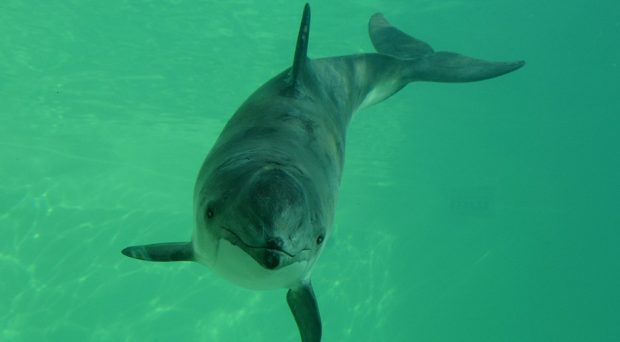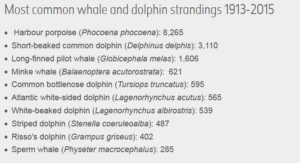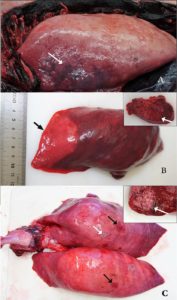
Porpoises are aquatic mammals belonging to the toothed whale family. They look similar to dolphins but can be distinguished by the shape of their noses (dolphins have beak-like noses), teeth (porpoises have spade shaped teeth) and their fins (porpoises have triangular dorsal fins as opposed to the hook shaped fins of the dolphin).

Harbour porpoises are one of six porpoise species and, as you might expect from the name, live close to shorelines. They are relatively small – making them targets for seal or dolphin attacks. There are approximately 250,000 harbour porpoises in the North Sea – one of the busiest areas of water in the world. Porpoise strandings are unfortunately common.
At the end of the 20th century, investigations showed that potential root causes for strandings could be bycatch, bronchopneumonia (bacterial, parasitic or a combination of both) and starvation.
Between 2003 and 2016, 131 porpoises stranded on the Dutch coast were sent to rehabilitation centres, but 61 of these could not be saved. Cornelis van Elk and colleagues conducted autopsies on these animals to determine cause of death, investigate whether these causes had changed from that seen in previous surveys and to evaluate the role of parasitic infection in pneumonia.

Their findings, reported in Veterinary Research, showed that pneumonia was the only cause of death in 13 animals and one of the causes in 21 animals. Over half the cases of pneumonia were connected to parasitic infection, either in combination with bacterial or fungal infections (13 cases) or on its own (8 cases). The pulmonary nematodes Stenurus minor, Torynurus convolutus, Halocercus sp., and Pseudalius inflexus were identified from the autopsies – parasites previously known to infect harbour porpoises. However, these parasites were found only in juveniles and adults but not neonates.
The team also found a significant role of Aspergillus sp infection (aspergillosis) in porpoise stranding, which had not been described in previous surveys. It is likely that aspergillosis resulted from impaired immunity, which Cornelis and his colleagues attribute to anthropogenic pollutants (e.g. heavy metals and polychlorinated biphenyls), viral infections or malnutrition.
Cornelis and his colleagues only looked at the cause of death in live-stranded animals, so their results may have been different if they had included dead-stranded animals – for instance the cases of bycatch would have been higher. They may have also spotted significant cases of faster-acting diseases, which killed off the porpoises before they reached the shoreline, but could be significant causes of strandings.
What can we do?
Porpoise, and in general cetacean, strandings are unfortunately common, and becoming increasingly so. The public are being asked in several countries to contribute to monitoring of strandings e.g. the Natural History Museum are asking UK citizens to report strandings as part of a citizen science project. No matter where you are in the world, you can report any strandings to your local strandings network. A note of caution though – for either live or dead stranded cetaceans, please leave the rescue or collection to the experts.

Comments